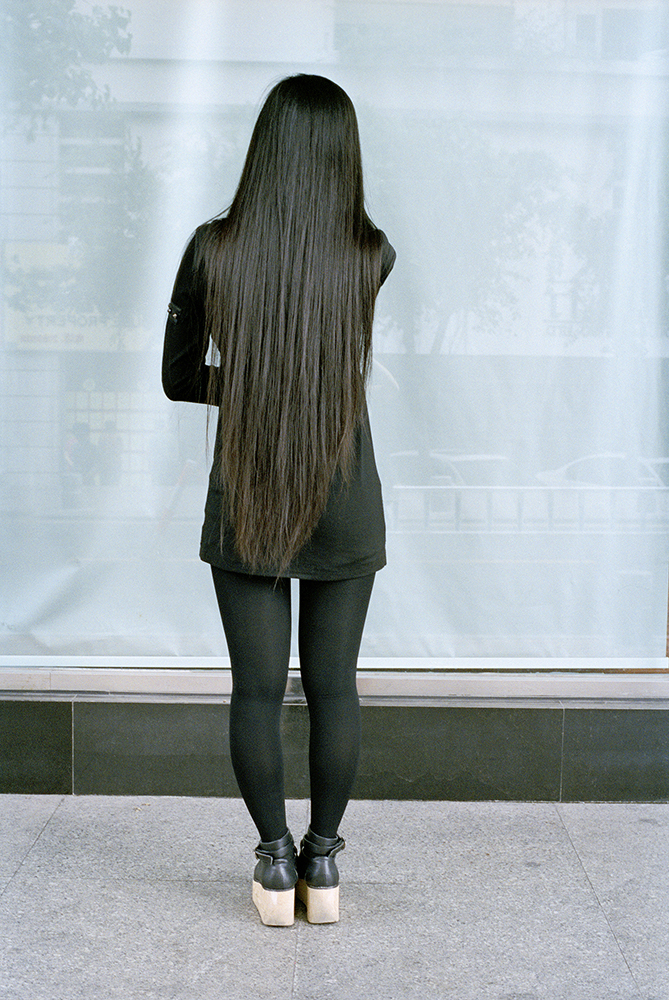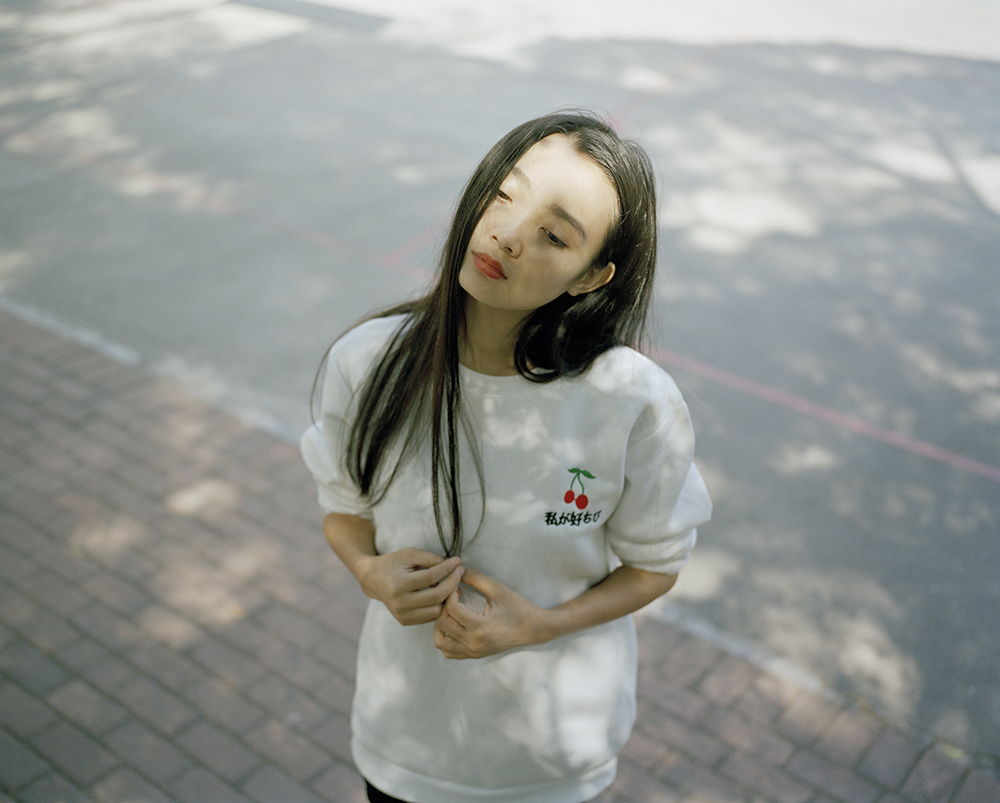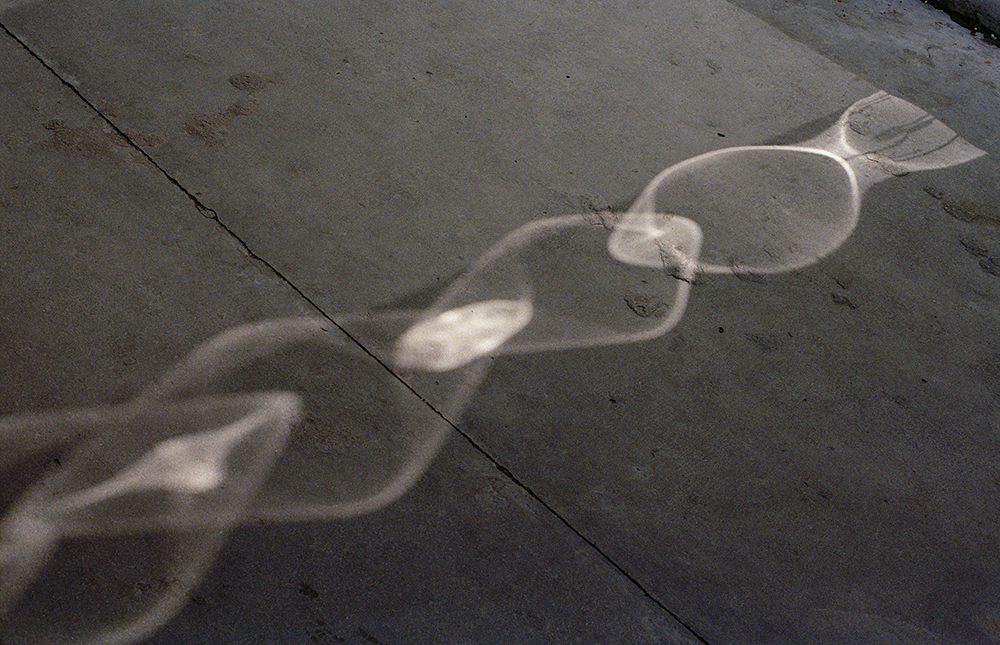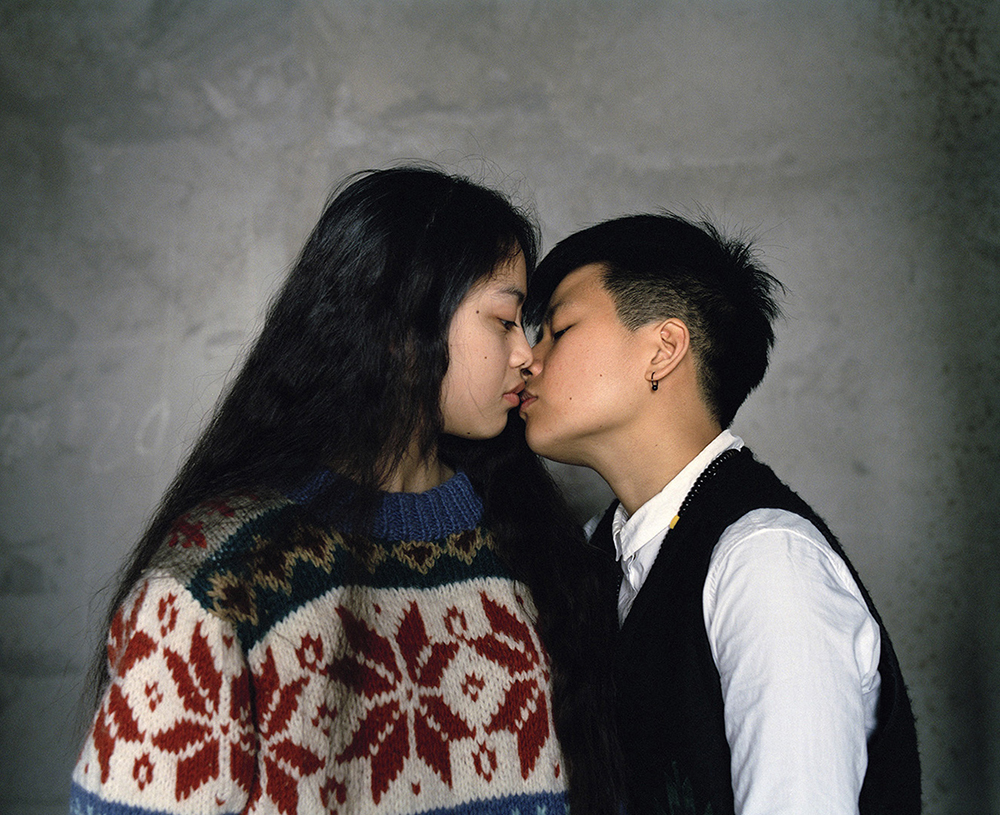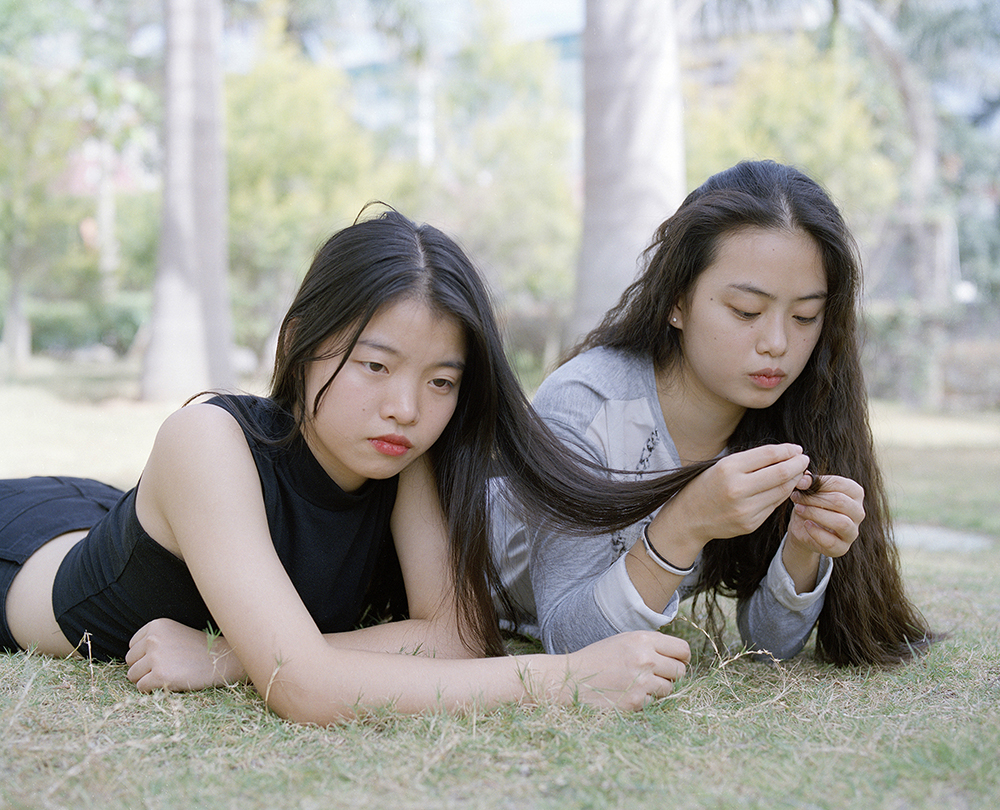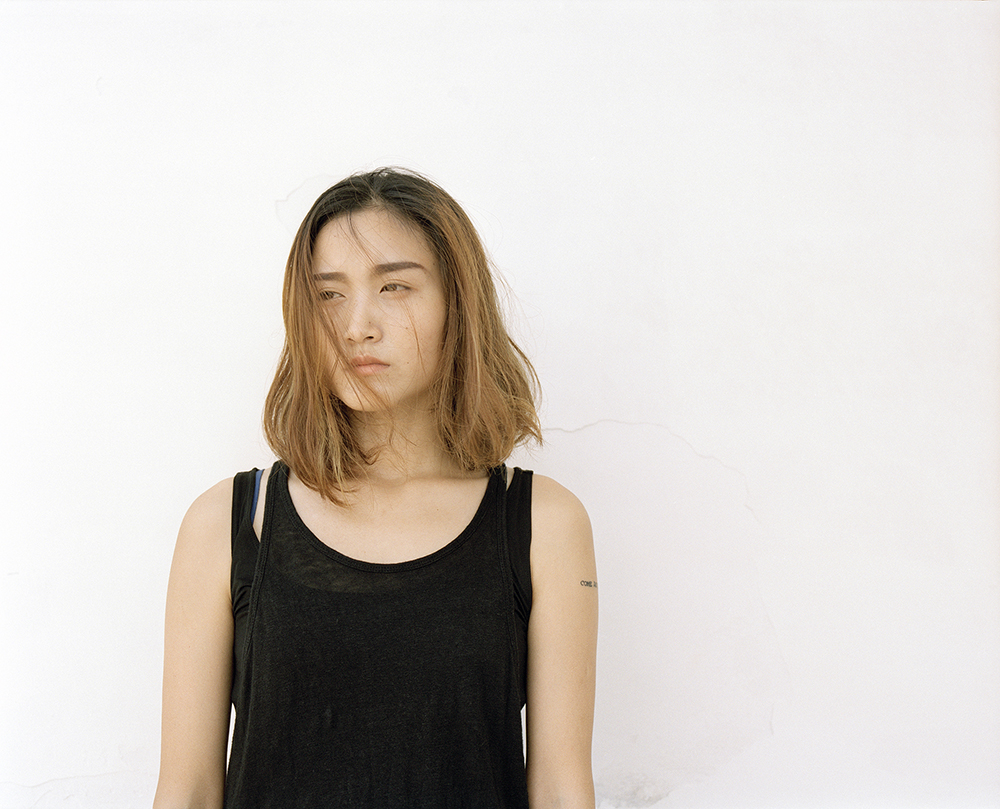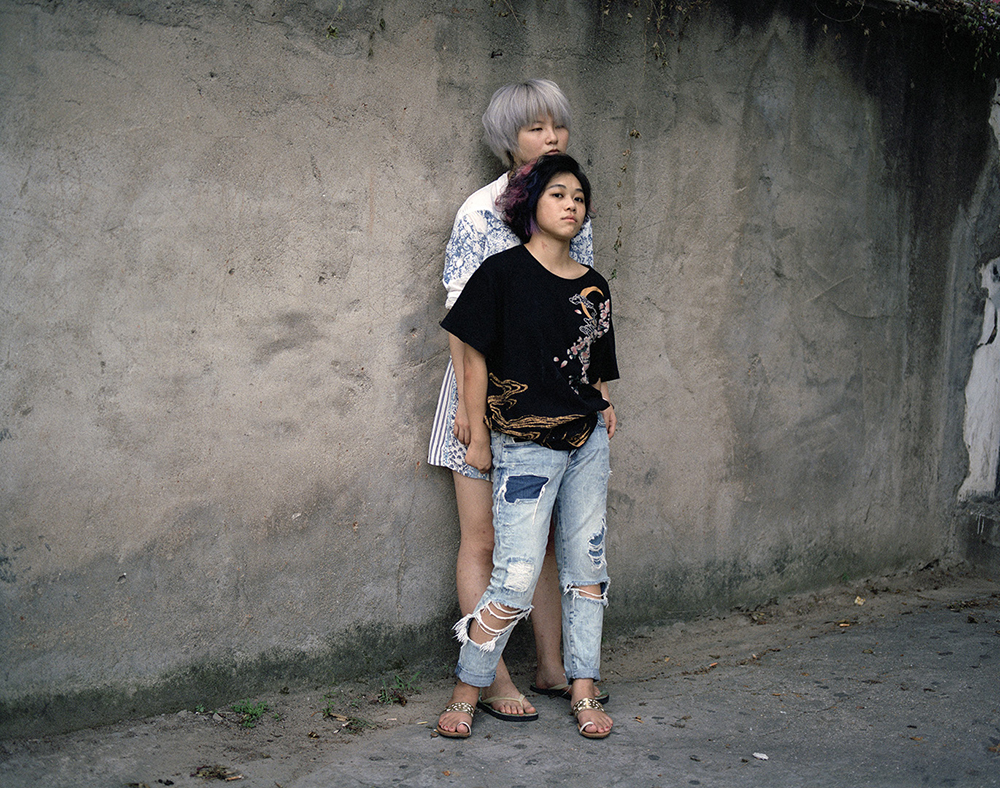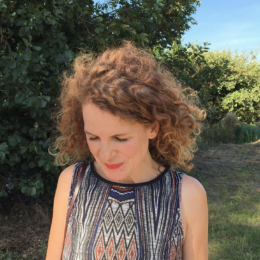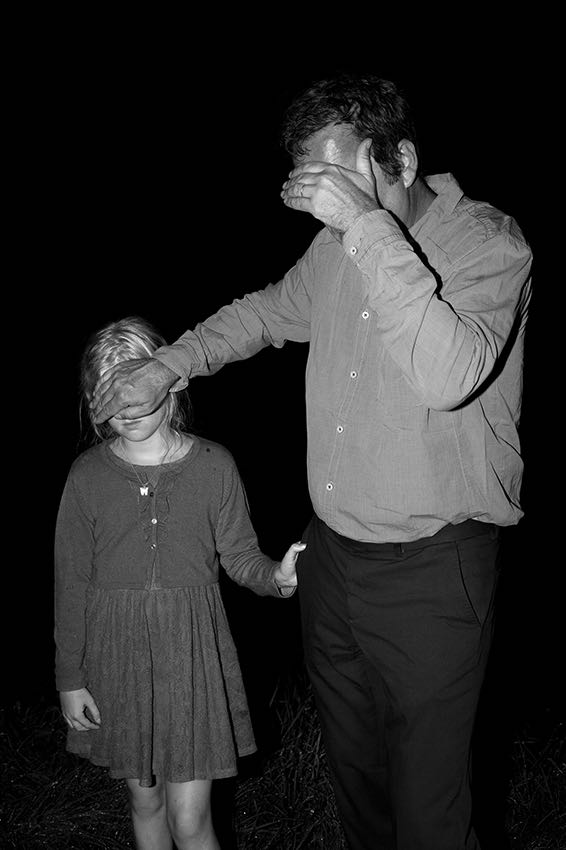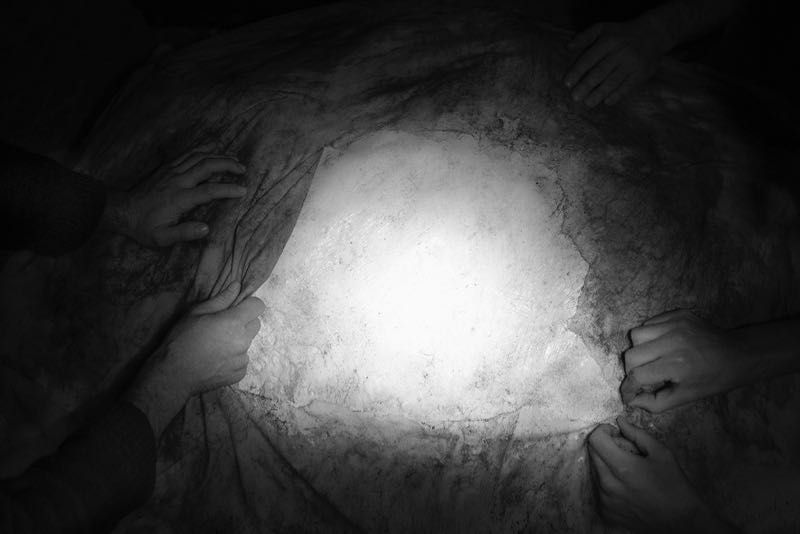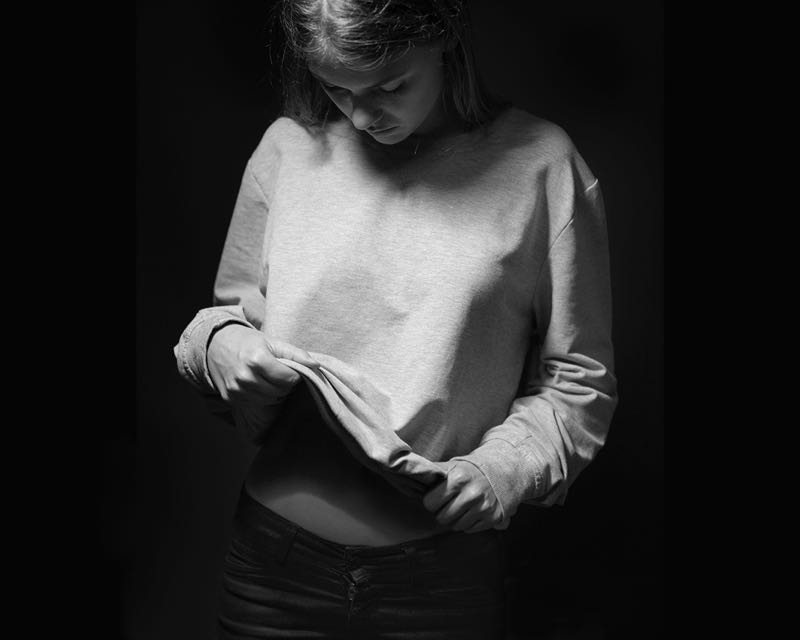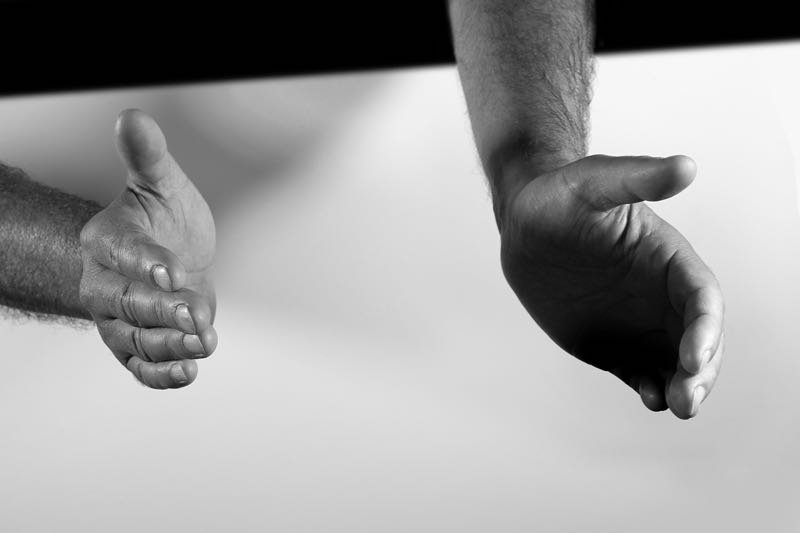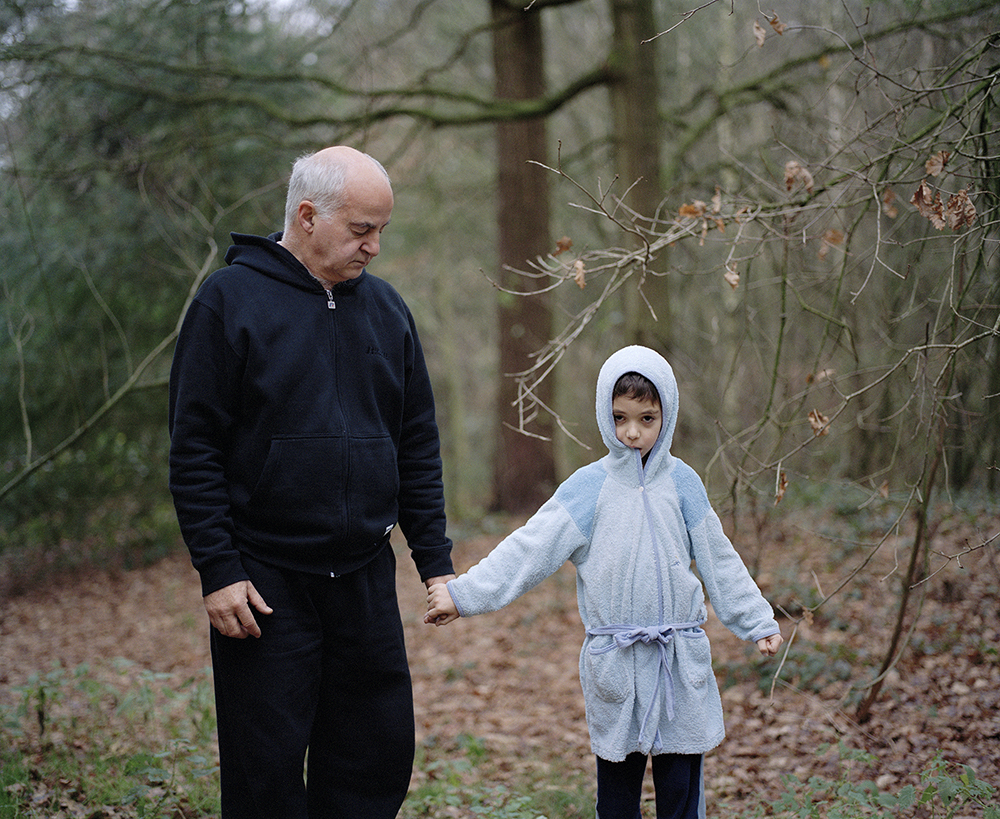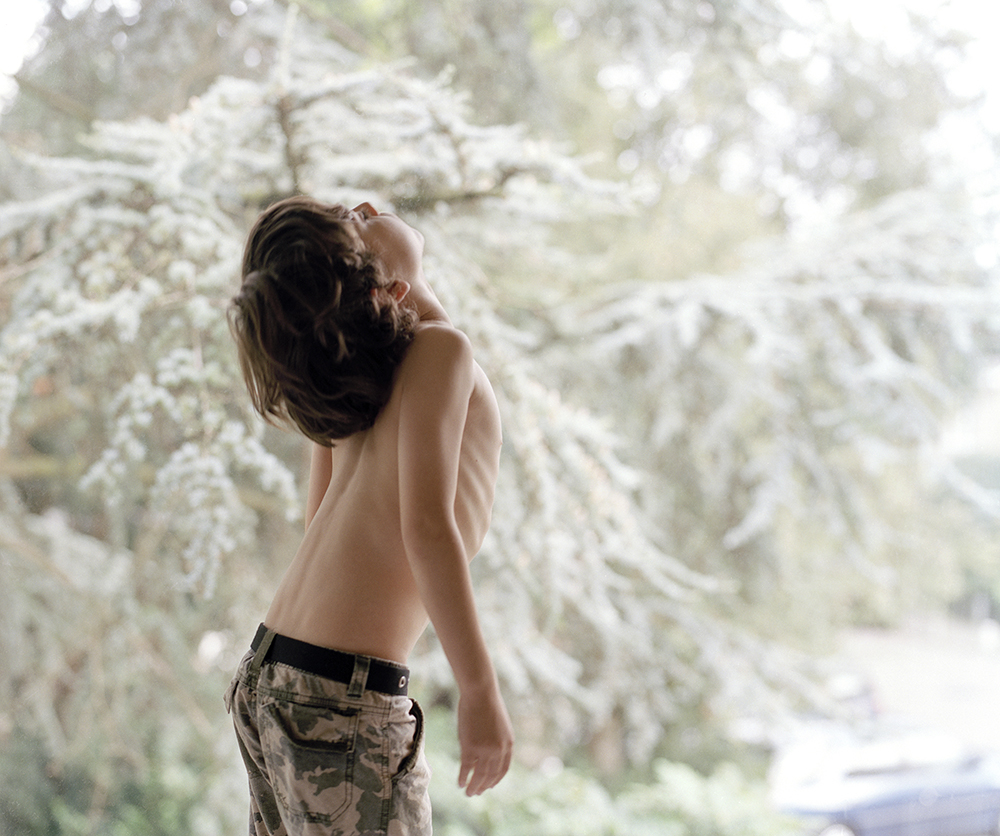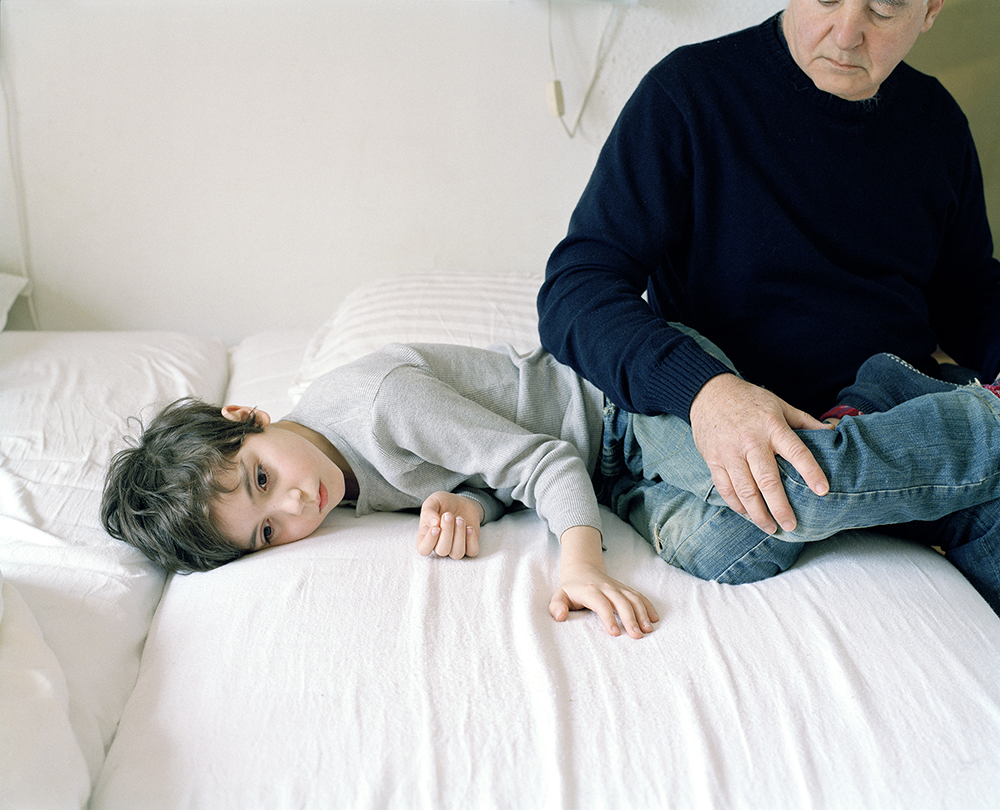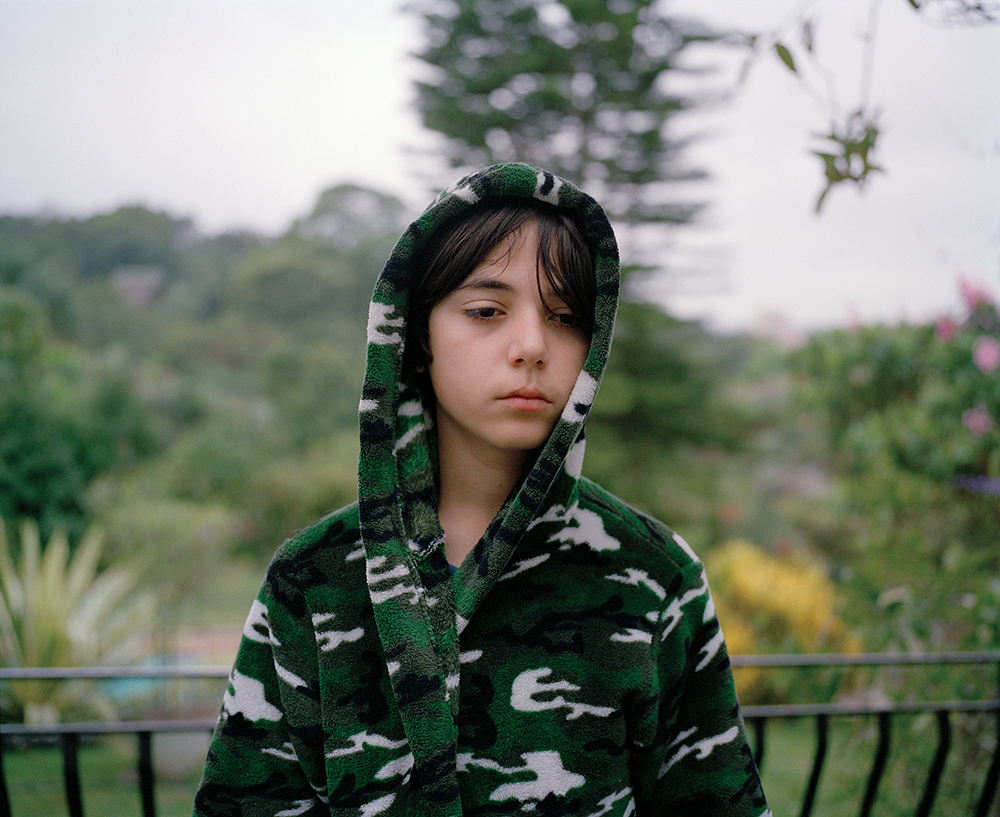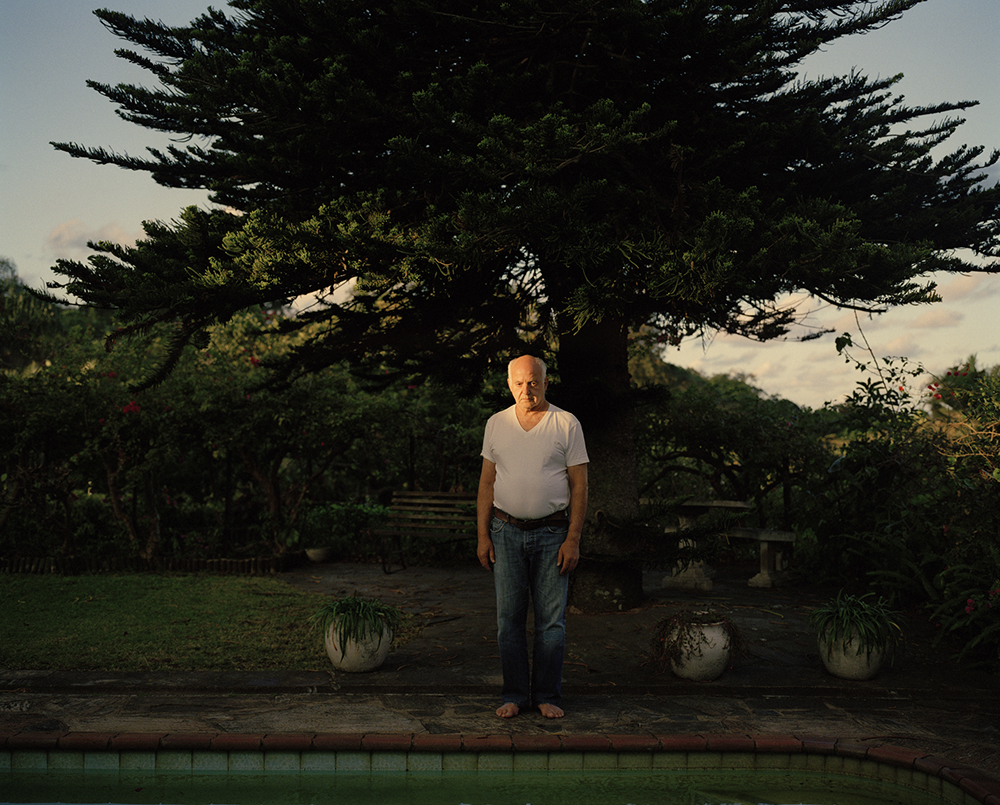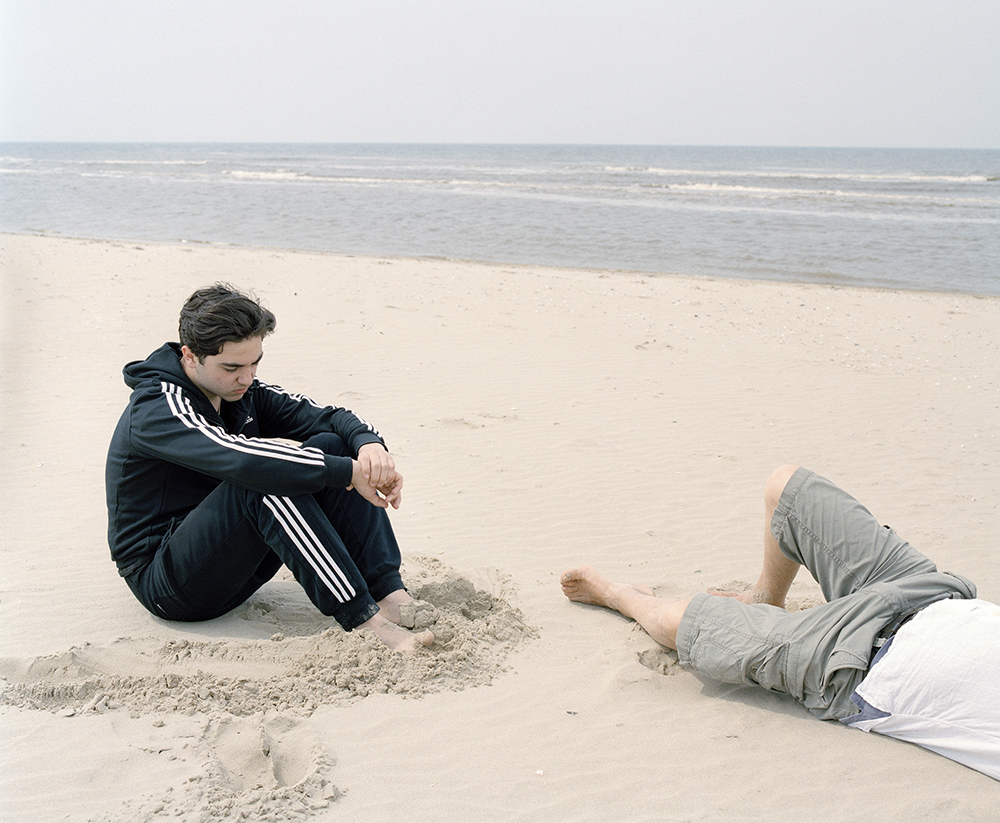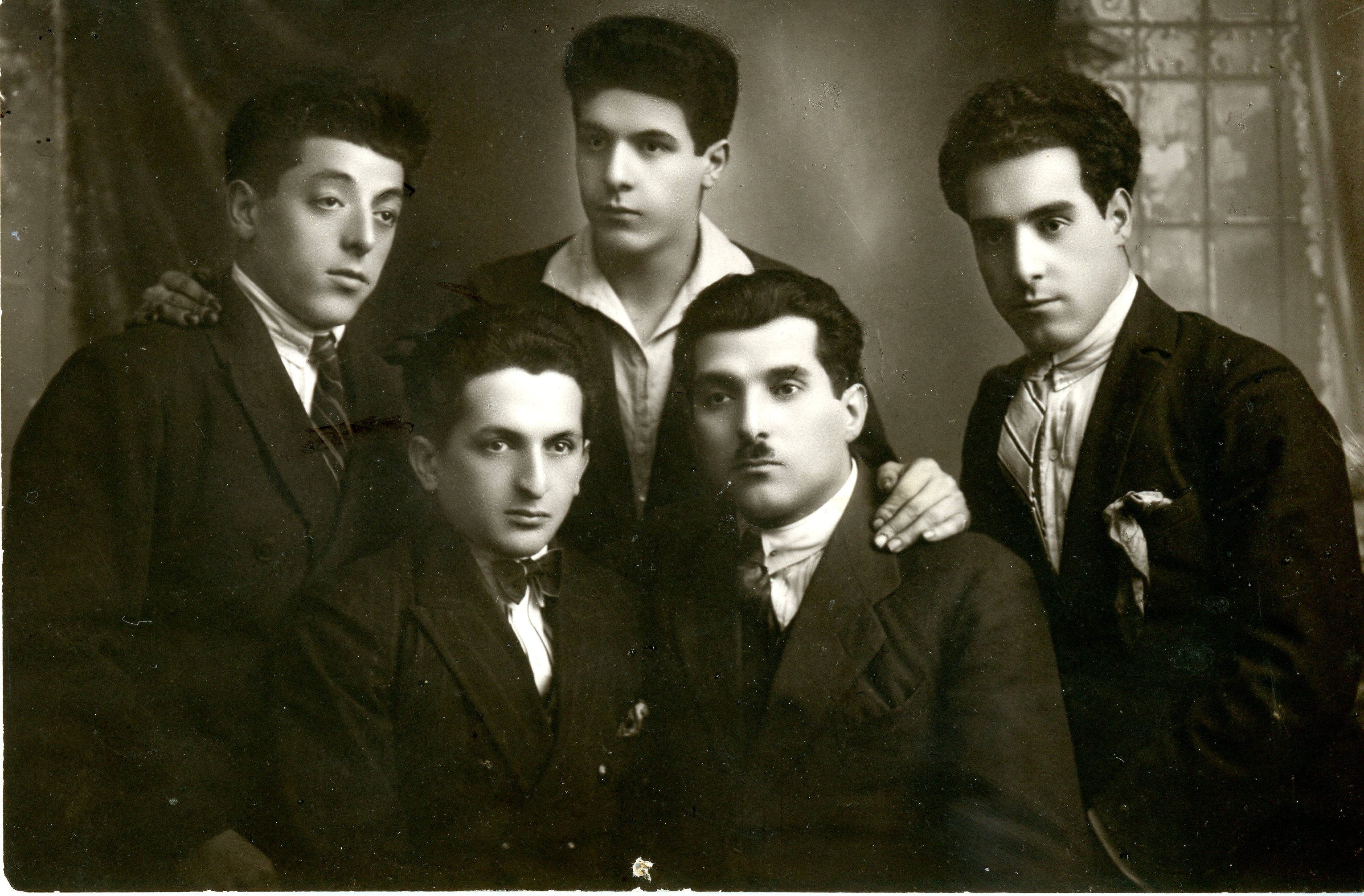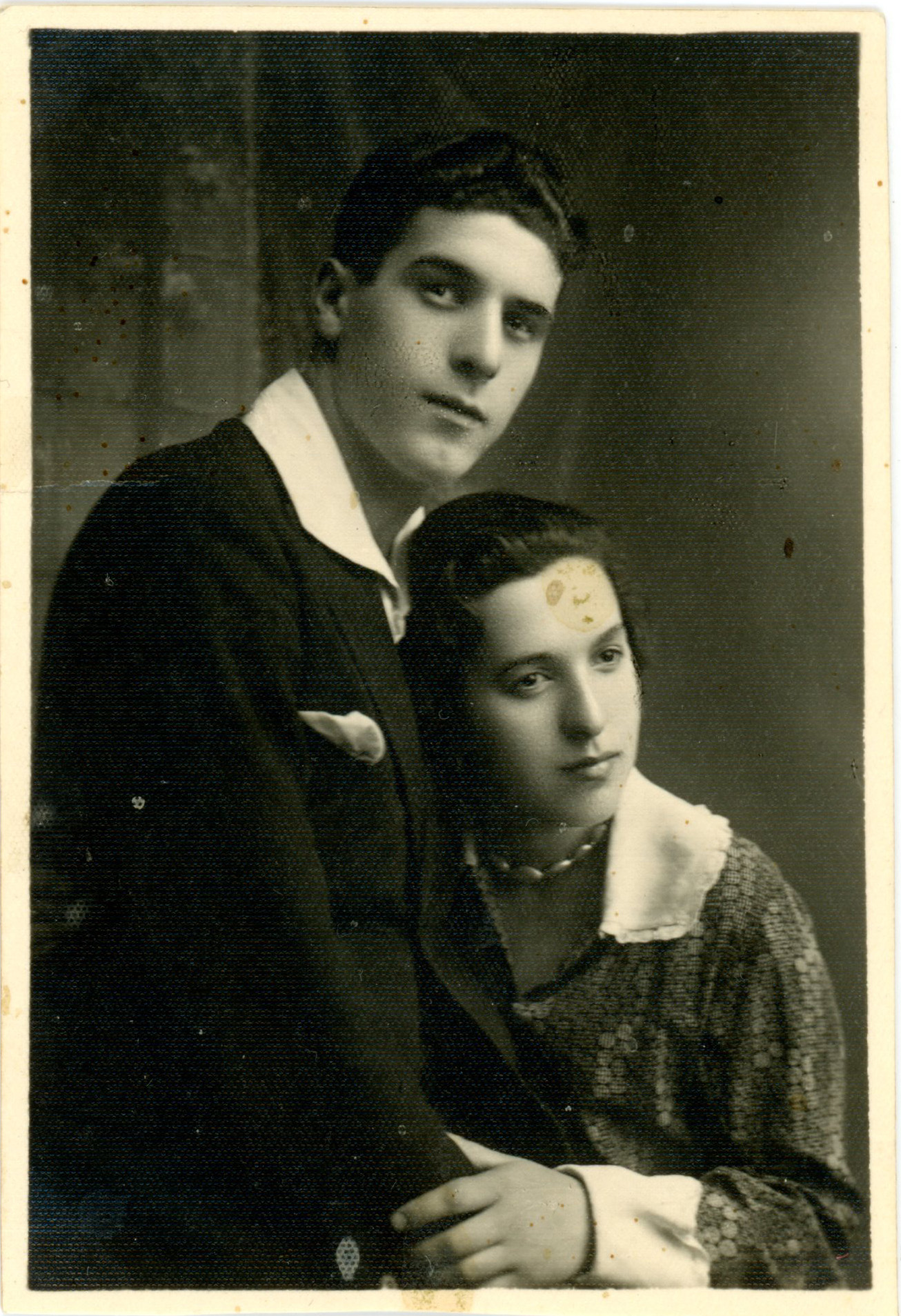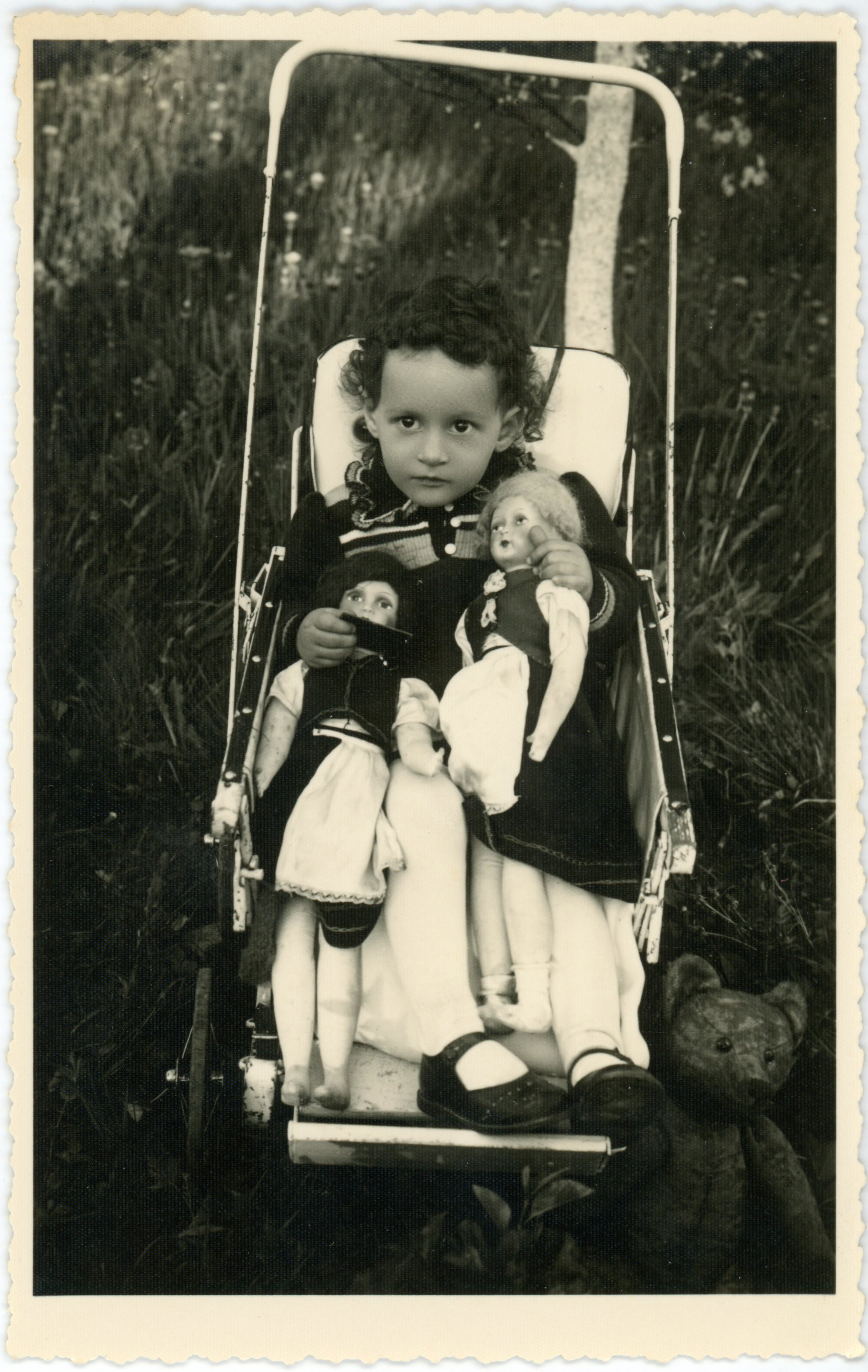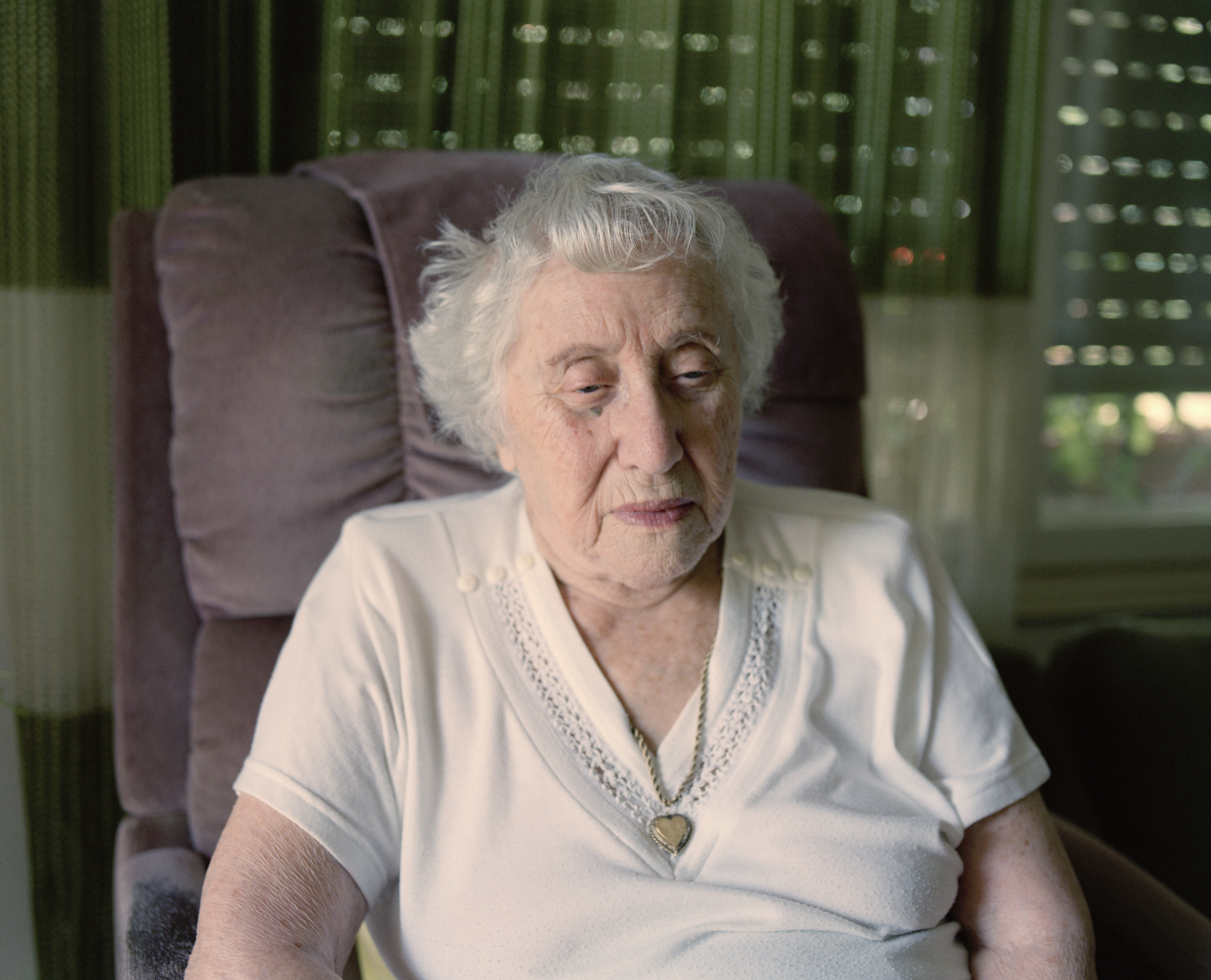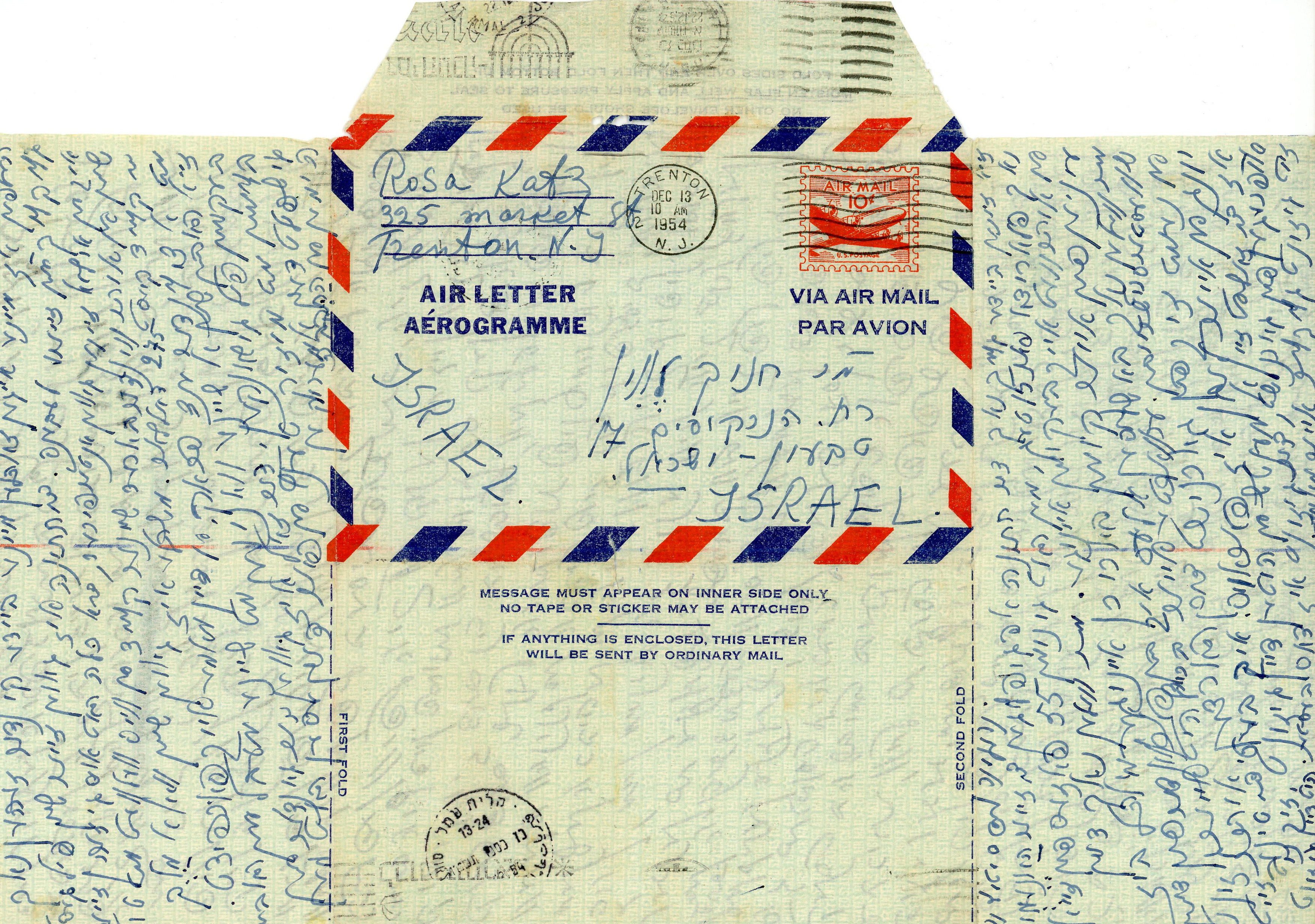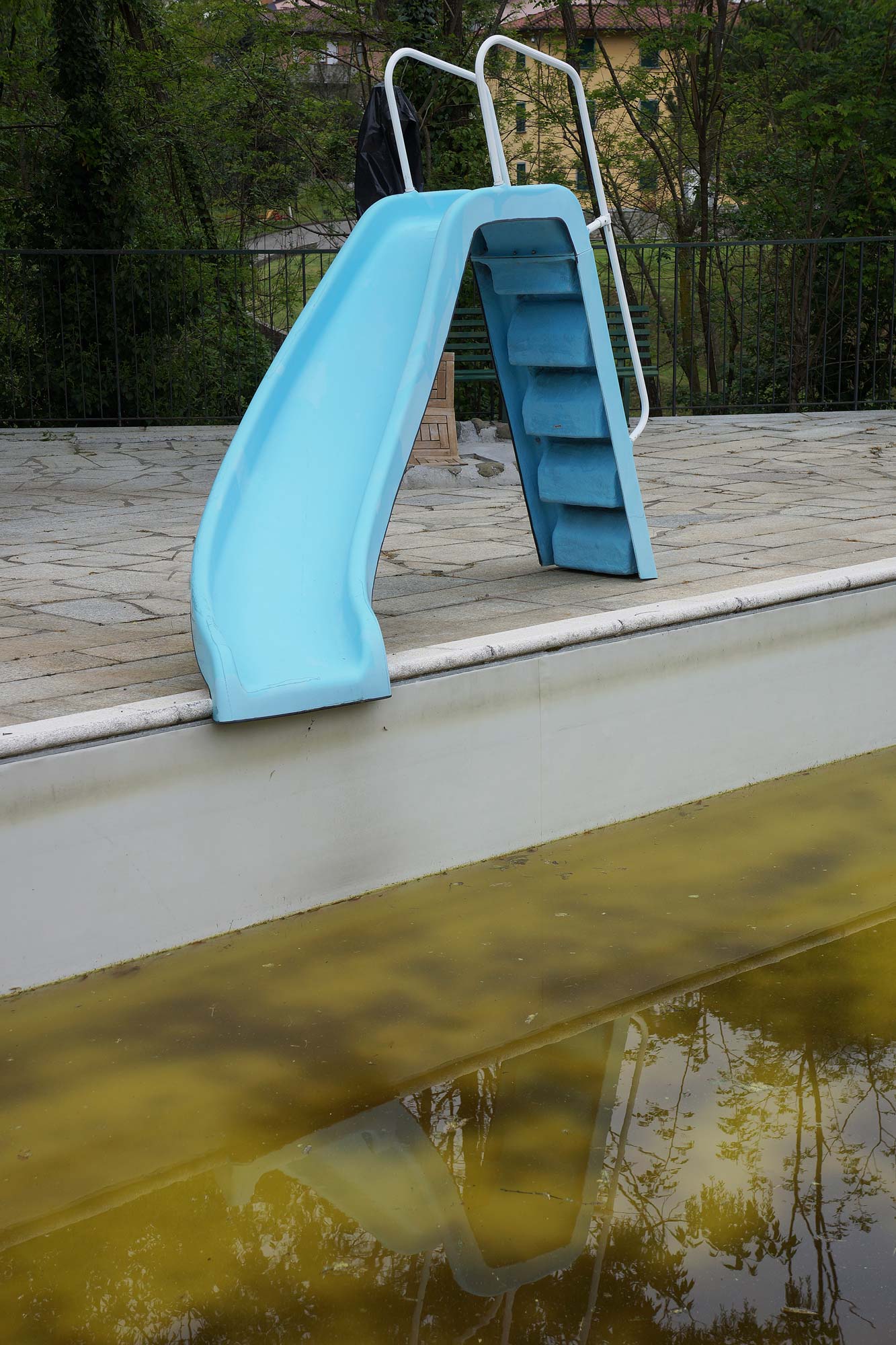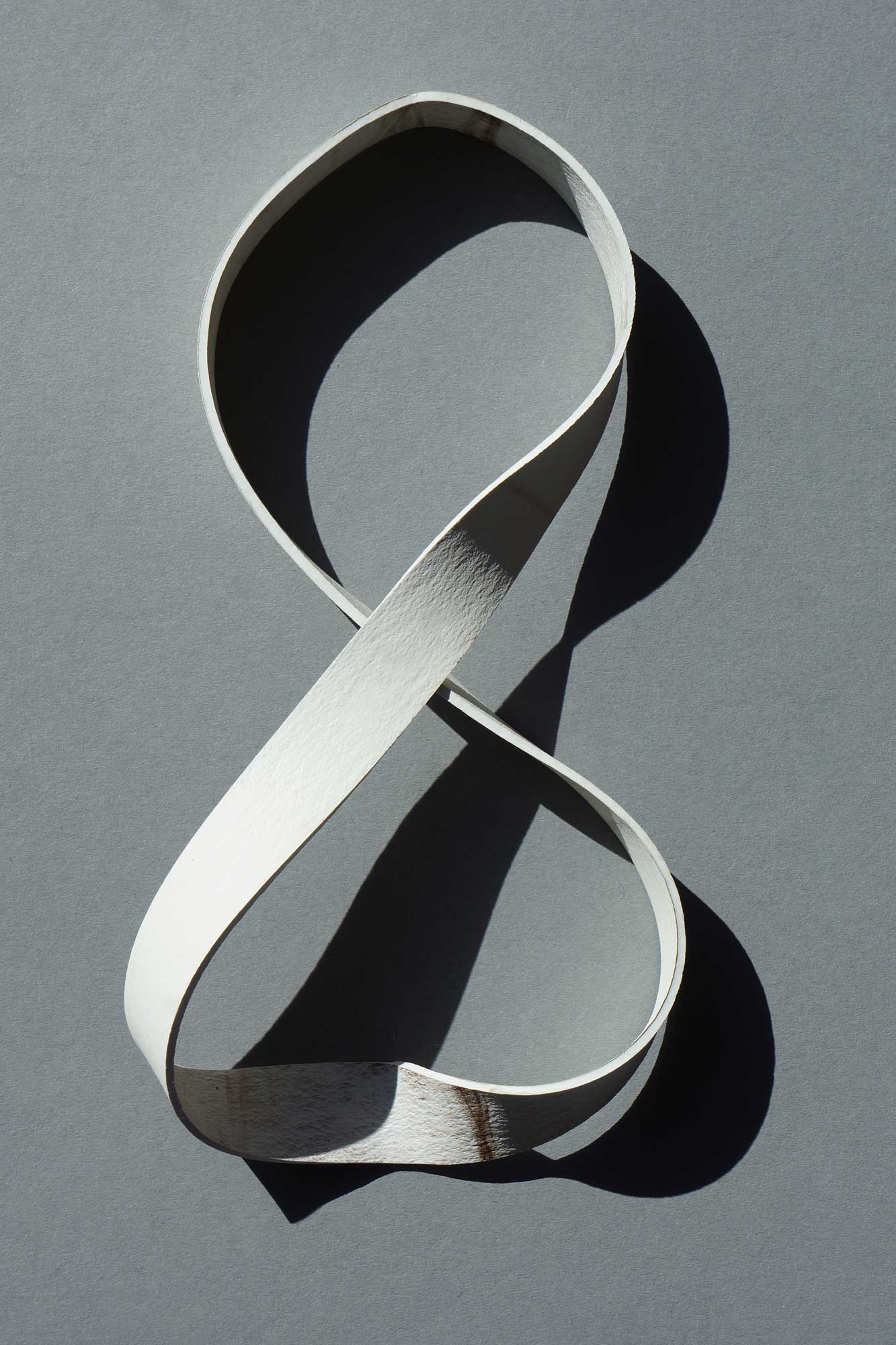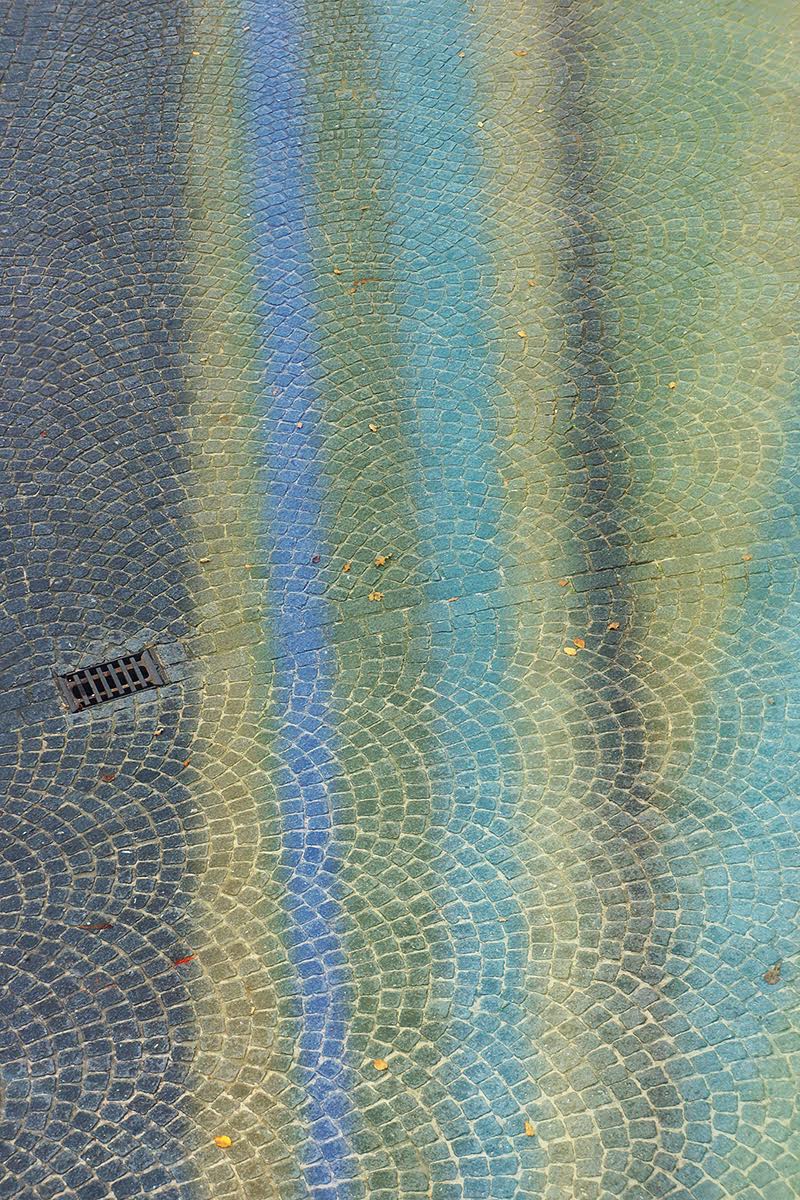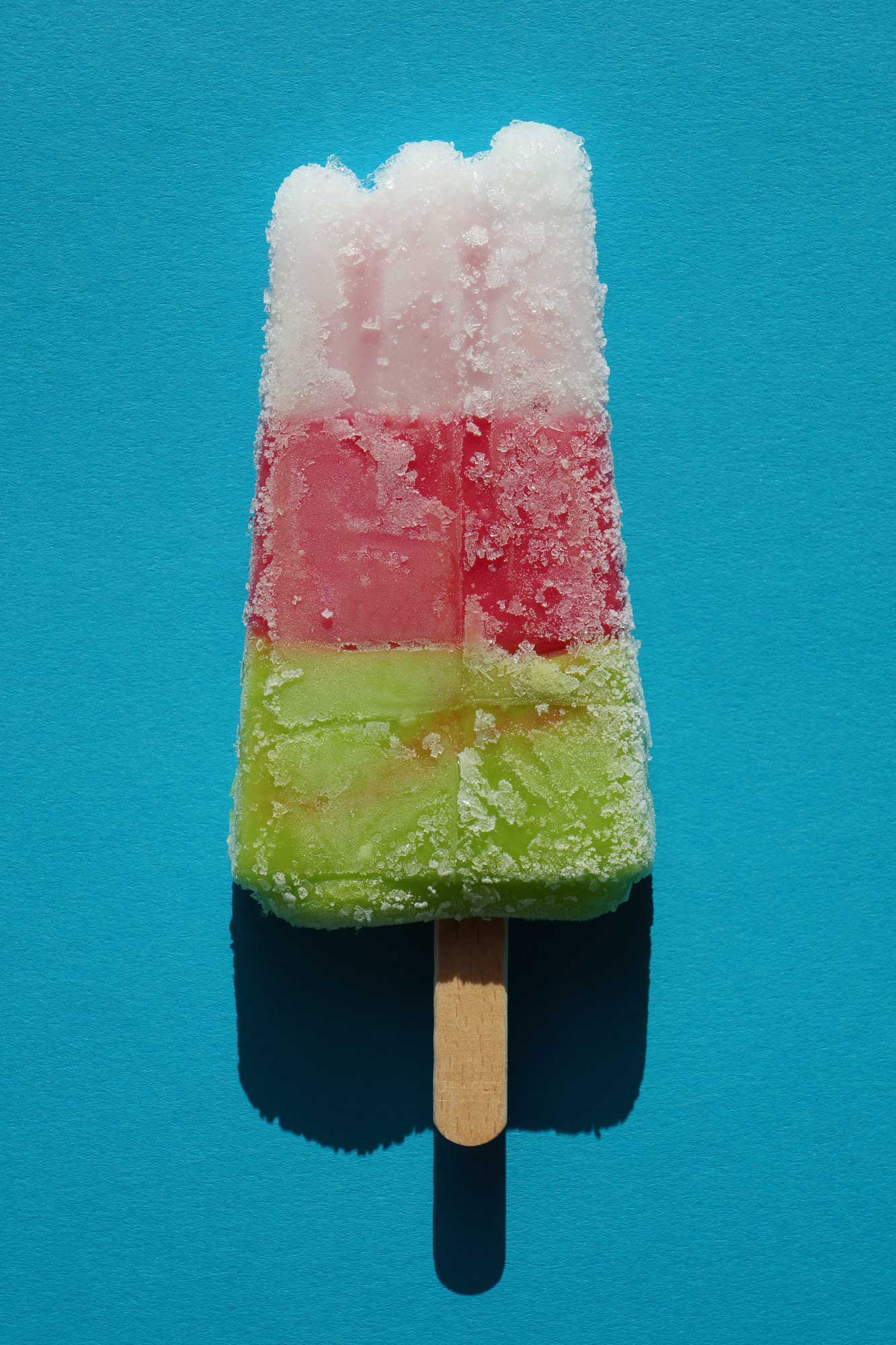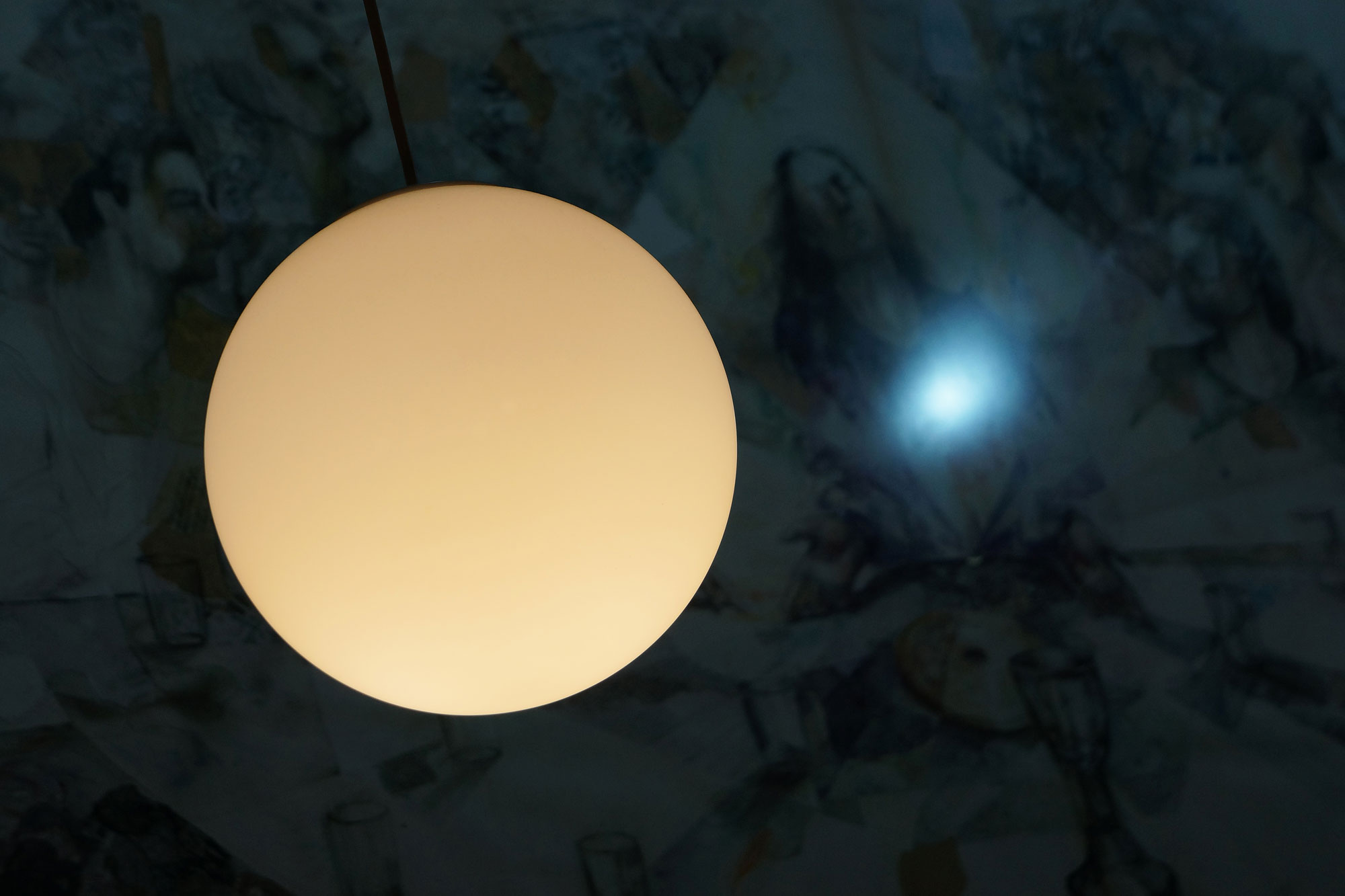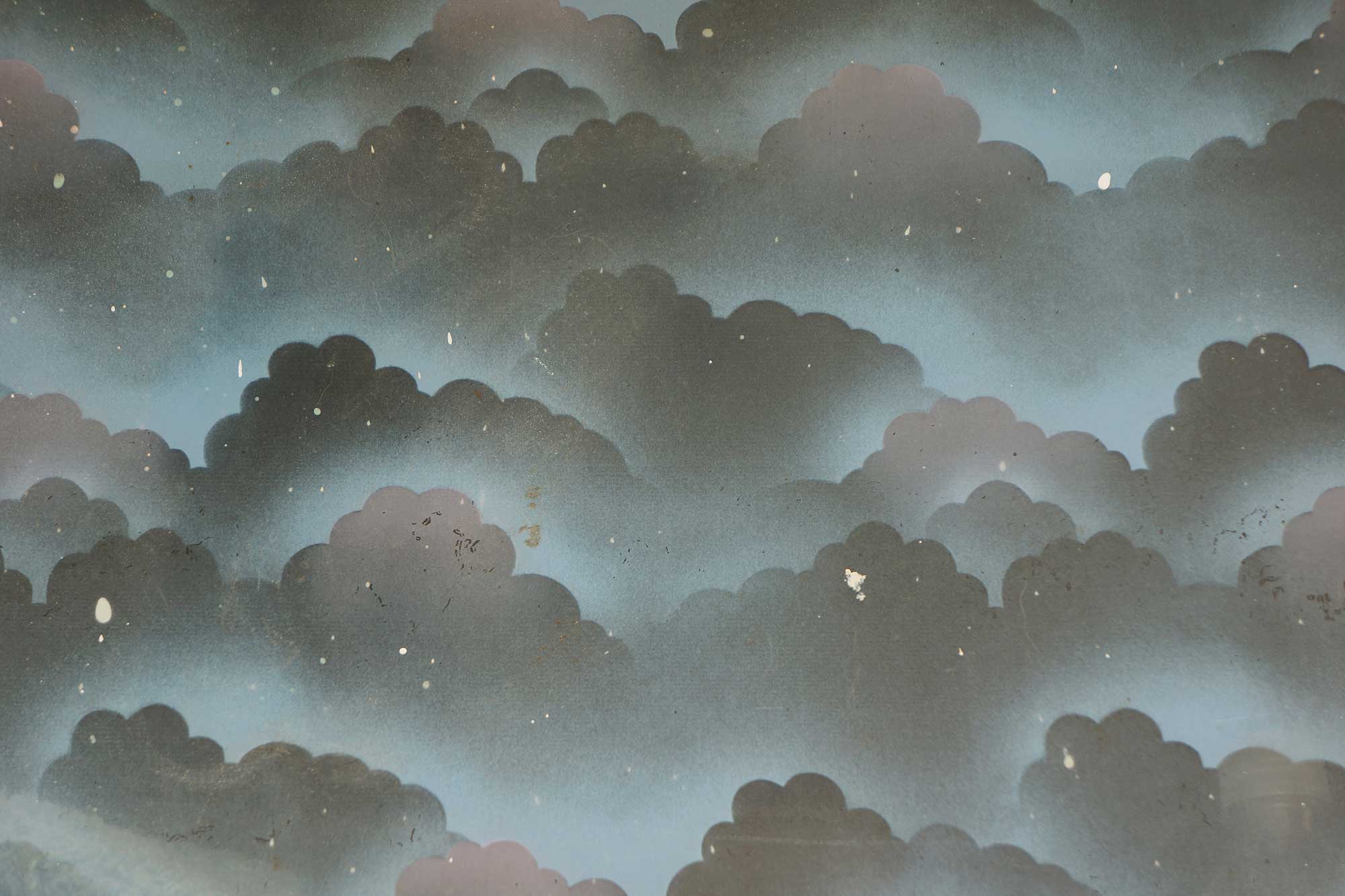Erik Franssen
Artist Feature
Every week an artist is featured whose single image was published by Der Greif. The Feature shows the image in the original context of the series.
Sarah Mei Herman - Screen Touch
Mar 08, 2017
I produced the work Screen Touch during a four-month artist in residence (September 2014 – January 2015) at The Chinese European Art Center in Xiamen. I was curious as to the differences but also at things that are universally recognizable: the things that tie people together and the meaning of friendship and love.
I photographed several young people and their intimate relationships, finding my subjects in the streets of Xiamen and at the university campus. With some of them I built up a closer friendship photographing them repeatedly, further exploring the ambiguity of some of these friend- and love relationships.
One of the first things that caught my attention in Xiamen was the ubiquitous use of smartphones, mainly by young people. I realized that, in a strange way, the smartphone somehow functions as a tool for intimacy. It disconnects people but paradoxically it has the ability to bring them closer together. It appears to have become an alternative way of achieving contact with each other: sharing intimacy through the screen. I’m fascinated by this contradiction, which I would describe as detached closeness. The smartphone is not the main subject for this body of work but it became an important source of inspiration.
Apart from photographs of young people and several still lives, the series also includes screens of the city, as I like to call them. To me these reflections of the city mirror the disconnection and detachment that seems to occur between people as a result of the intense use of their smartphone.
They also symbolize the language barriers I experienced, and my personal struggle to communicate.
Artist Blog
The blog of Der Greif is written entirely by the artists who have been invited to doing an Artist-Feature. Every week, we have a different author.
Published in:
»Der Greif #9«
»Guest-Room Lucy Soutter«
Tom Callemin
Mar 14, 2017 - Sarah Mei Herman
Visiting the group exhibition “Zwart” at Museum Kranenburgh in Bergen, The Netherlands, I was immediately drawn to the intruiging and puzzling work by Belgian photographer Tom Callemin.
His subjects loom up out of complete darkness. Bare and stripped of all frills. Charged.
It is their utter concentration that keeps me captive.
These images somehow feel familiar, yet, at the same time they disquiet me.
—
Extract from Interview – Foam Talent: “The uneasy realisation of a model”
By Taco Hidde Bakker
The act of photography is performance in the work of Callemin, whether he works with people, animals or objects. Callemin’s own role is also brought into play, to an extent that the viewer of his work will be confronted with his own role vis-à-vis the model, but also the artist in whose place he has come to stand. “In photography a viewer always comes to replace the apparatus.” Callemin hopes that his careful and attractive compositions will create an experience within the viewer, but within that experience also a capsizing towards something more unsettling, perhaps through identification with the unease of the models, who usually are put to the test when collaborating with Callemin on the realisation of a photograph.
Julian and Jonathan
Mar 13, 2017 - Sarah Mei Herman
For this post I would like to share my most extensive body of work “Julian and Jonathan”: an ongoing series about my father and my twenty years younger half brother Jonathan, which I started in 2005.
This body of work portrays the triangular relationship between the three of us. My memories as a young child, of the relationship with my father, are now in a way mirrored in my half brother. By photographing Jonathan I try to approach our unusual sibling relationship which I am part of at a physical distance. This work is very much about me, and this part of my family, as well as the relationship between a relatively older father and his young child.
Jonathan is sixteen years old now and he is going through a lot of transitions. He is still a child in many ways but at the same time he is becoming a young man.
The relationship between Julian and Jonathan remains very close and they seem to share a world which I’m not entirely part of. The way Jonathan relates to me has changed a lot recently and for the first time I am truly experiencing what it means to have a brother and to share a parent.
Factum Kang – Candice Breitz
Mar 11, 2017 - Sarah Mei Herman
At the White Cube in London in 2010, I came across this fascinating work by the South African artist Candice Breitz. It always stayed with me, especially this video portrait of the twin-sisters Hanna and Laurie Kang, and their relentless honesty.
I have always been fascinated by sibling relationships which, I guess, comes from the fact that I grew up without a sibling. As a child I always wondered what it would be like. Nowadays as an adult, I find myself observing siblings, repeatedly photographing and filming them; imagining what it means to share the first stages of ones life with a sibling, and trying to get a closer understanding of what familial intimacy means.
The relationship between identical twins is probably the closest possible relationship there is. However, this work also shows that it can be extremely complicated. As one of the twin sisters Kang says in the video portrait: “It’s amazing but it’s also terrible at the same time…”
From White Cube
Breitz has often shown an interest in the alternating modes of desire and repulsion that shift between lovers, fans and celebrities. ‘Factum’ looks at the intensity of these forces between identical twins. Each ‘Factum’ is presented as a diptych (and one triptych), with each twin or triplet beside his or her sibling, dressed almost identically and in the same setting. Breitz interviewed each individual alone for up to seven hours, asking each twin the same set of questions. The artist then transcribed and analyzed each pair of interviews before editing the material into a dynamic conversation between the siblings, with the intertwining forces of documentary and fiction constantly at play. Through candid, often emotional responses, they reveal the strangeness, joys and difficulties of living one’s life in parallel to someone who shares your exact genetic code and yet who possesses a distinct identity, with desires and tastes that may differ in subtle or significant ways. While the initial interview allowed each twin or triplet to tell his or her own story unencumbered by the presence of a sibling, Breitz complicates this relationship in the finished work by introducing the other twin as an interlocutor who offers a different perspective, with the artist also implicitly present as a third ‘author’ to the biographies. Through this format, Breitz underlines how any biography becomes a negotiation between various relationships, circumstances and desires – not to mention one’s genetic heritage.
Foto Germanas – Work in progress
Mar 10, 2017 - Sarah Mei Herman
In November 2015, I first came to Kaunas, Lithuania, upon invitation by Kaunas Gallery as an artist in residence to work on a project about my Jewish family history. A few days ago I returned to Kaunas where I’m currently continuing my research and project.
It all started with this box of old family photographs that my father gave me, of which many are made in photo studio Germanas. Apart from these photographs and a few things that my father told me, I knew very little.
Together with his youngest brother Jehuda, my grandfather Mordechai used to have a photo studio in Lithuania (first in Rokiškis and later in Kaunas) where they made family portraits. The studio was called Foto Germanas, which is the Lithuanian for Herman, the family name I carry.
I can’t stop looking at these portraits. They have such a still and serene beauty and, at the same time, there is such a profound sadness in them knowing that these photographs were made before the horrors of the holocaust, which many of my family members did not survive.
As part of this project I also visited Israël last September, where I visited 90-year-old Tonia Levin, who is the daughter of Solomon, the oldest brother of my grandfather. She is my last family member who survived the holocaust. I photographed and filmed her and recorded her memories.
Not long ago I discovered a photograph on the internet, made in my grandfather’s photo studio, which turned out to be part of the archive of the Rokiškis Region Museum. Thanks to them, I got hold of many photographs made by my grandfather and his brother. Of course, most of these people portrayed are unknown to me, yet some of these photo’s are haunting me. It is the stillness in the faces that fascinate me. It makes me wonder what my grandfather might have said to the people when he was photographing them. My grandfather died when I was five years old, long before we could have spoken about this part of his life in Lithuania and, before I knew that I would become a photographer as well.
In the beginning of this project I manically tried to get all the answers about my family history. I’m still spending days of searching archives and listings trying to find even the smallest answer, but I realize that I will never be able to find the complete truth and certain things will always remain hidden. Probably it is the unknown that drives me.
Jessica Backhaus – Six Degrees of Freedom
Mar 09, 2017 - Sarah Mei Herman
In this first blog I would like to share the beautiful and intriguing work of German artist Jessica Backhaus.
Last month I had an exhibition at Exposure12 in Berlin, together with artist Eva Gjaltema. Jessica Backhaus had been approached to speech at the opening of our exhibition. Later that evening I had the chance to speak to her and it was a very special encounter. Jessica asked me to say a few words at her upcoming show “Six degrees of freedom” at Gallery Wouter van Leeuwen in Amsterdam.
While looking at her work I realized there are quite a few similarities in our work. While Jessica photographs still lives and I mostly portray people, we both seem to work with the themes of stillness, memory and longing. Her photographs show us everyday objects and scenes, yet at the same time they seem to transcend the ordinary. Although her images are based on her personal memories, Jessica has the ability to touch upon something very profound that is universally recognizable. To me her images evoke a feeling of melancholy; like a time and space which is neither here nor there.





